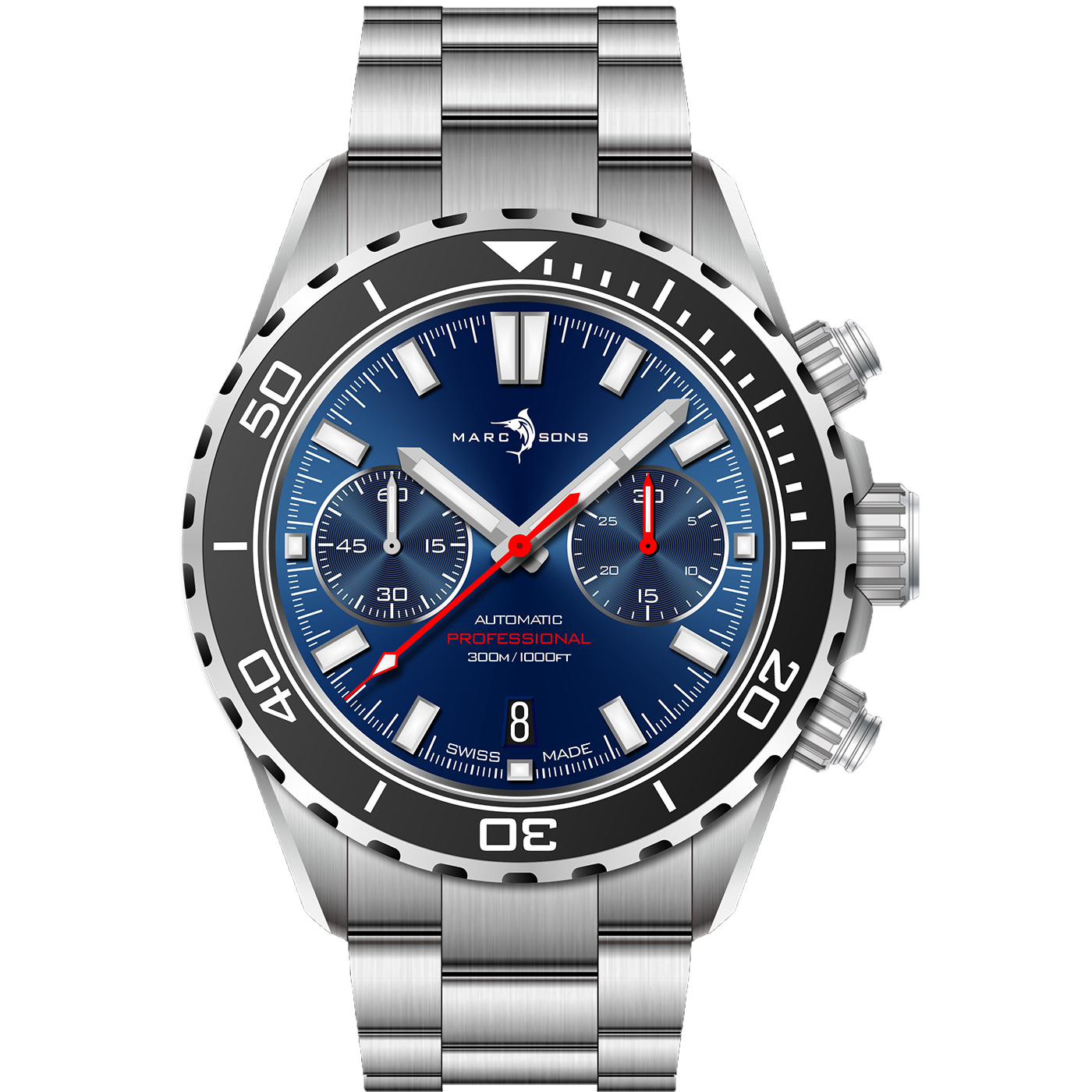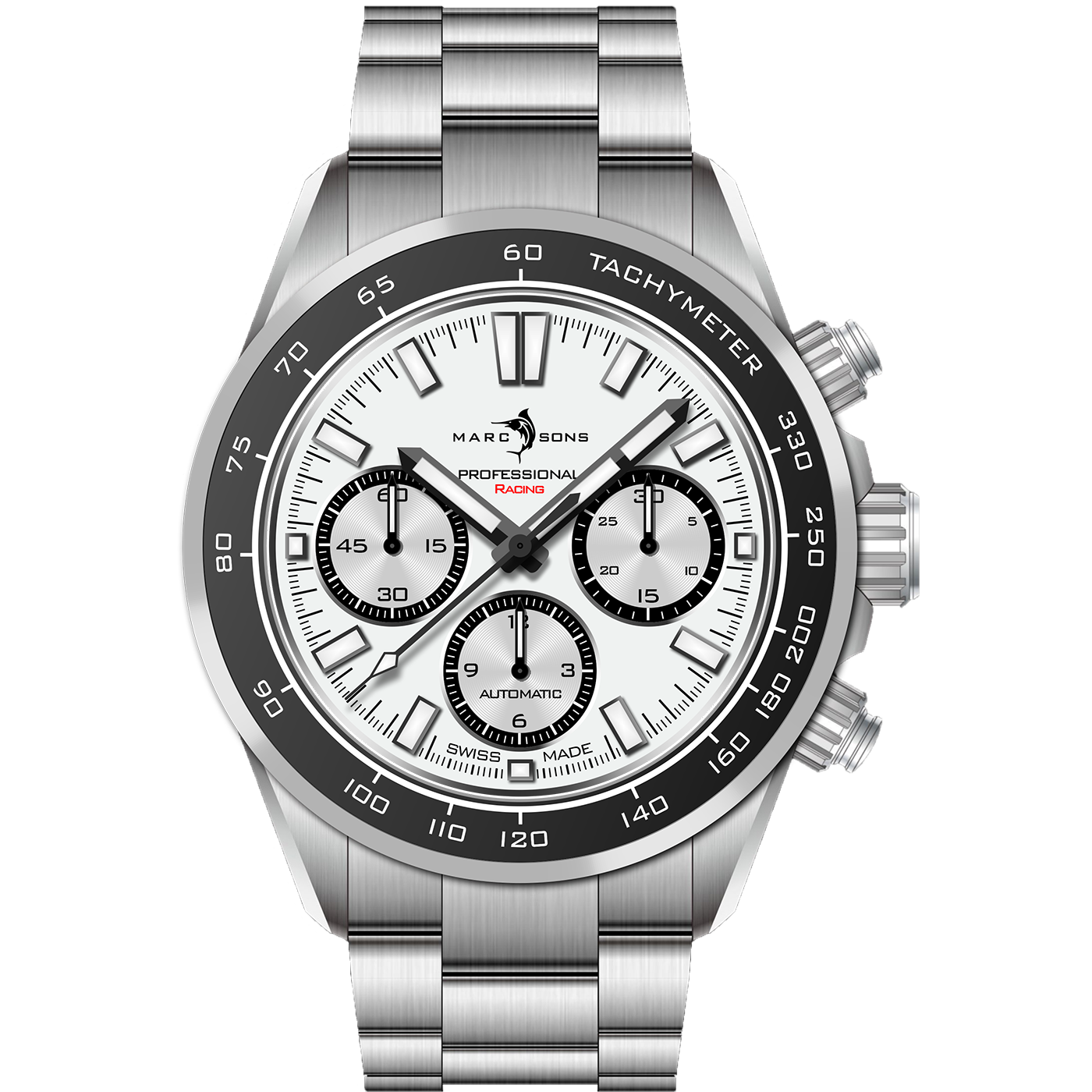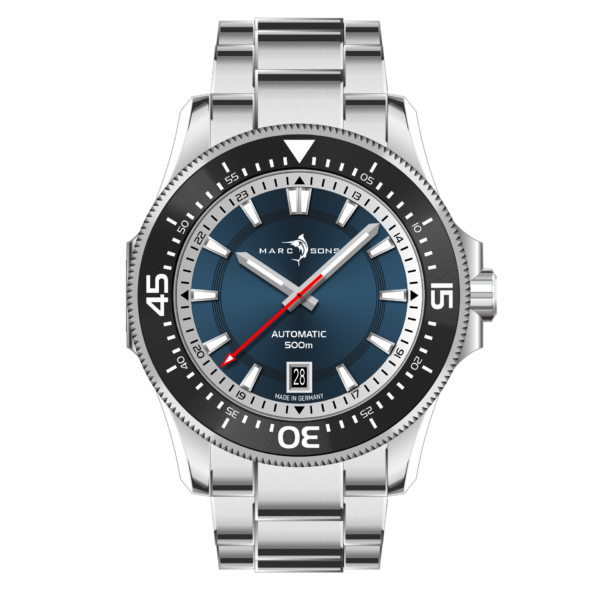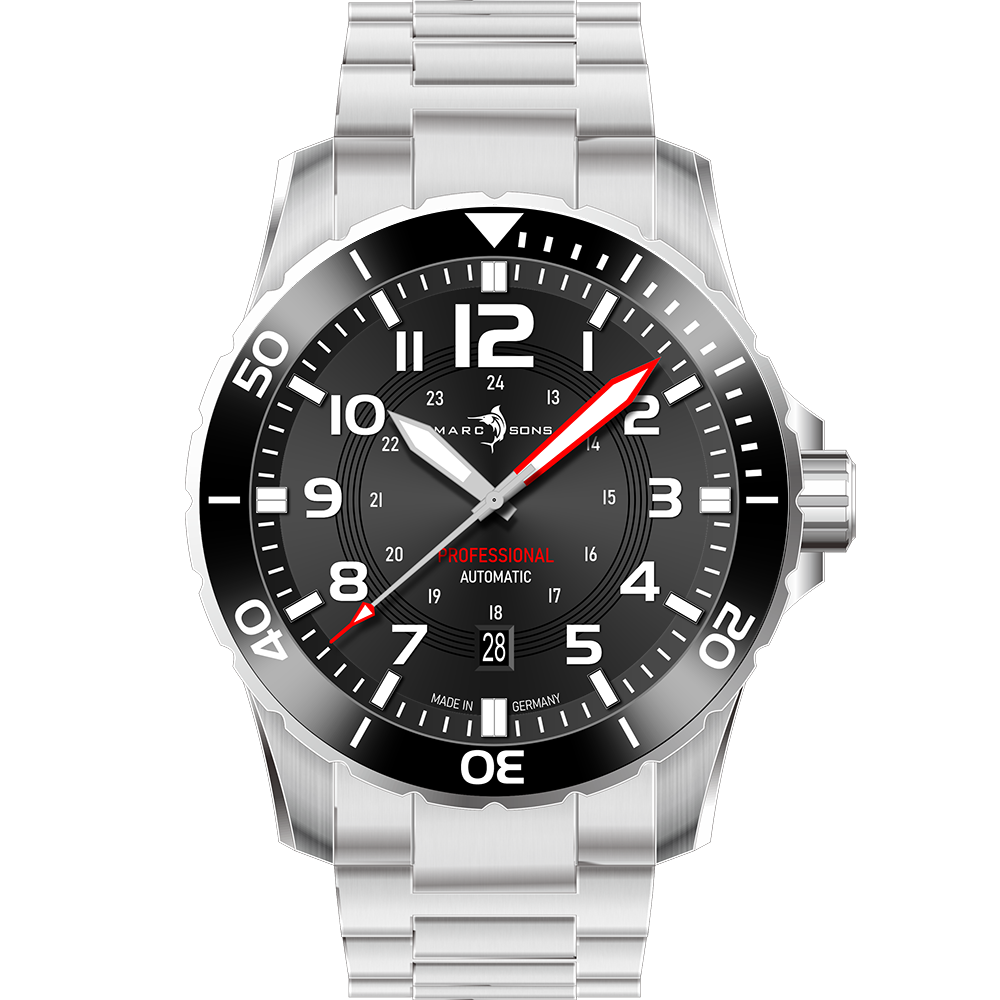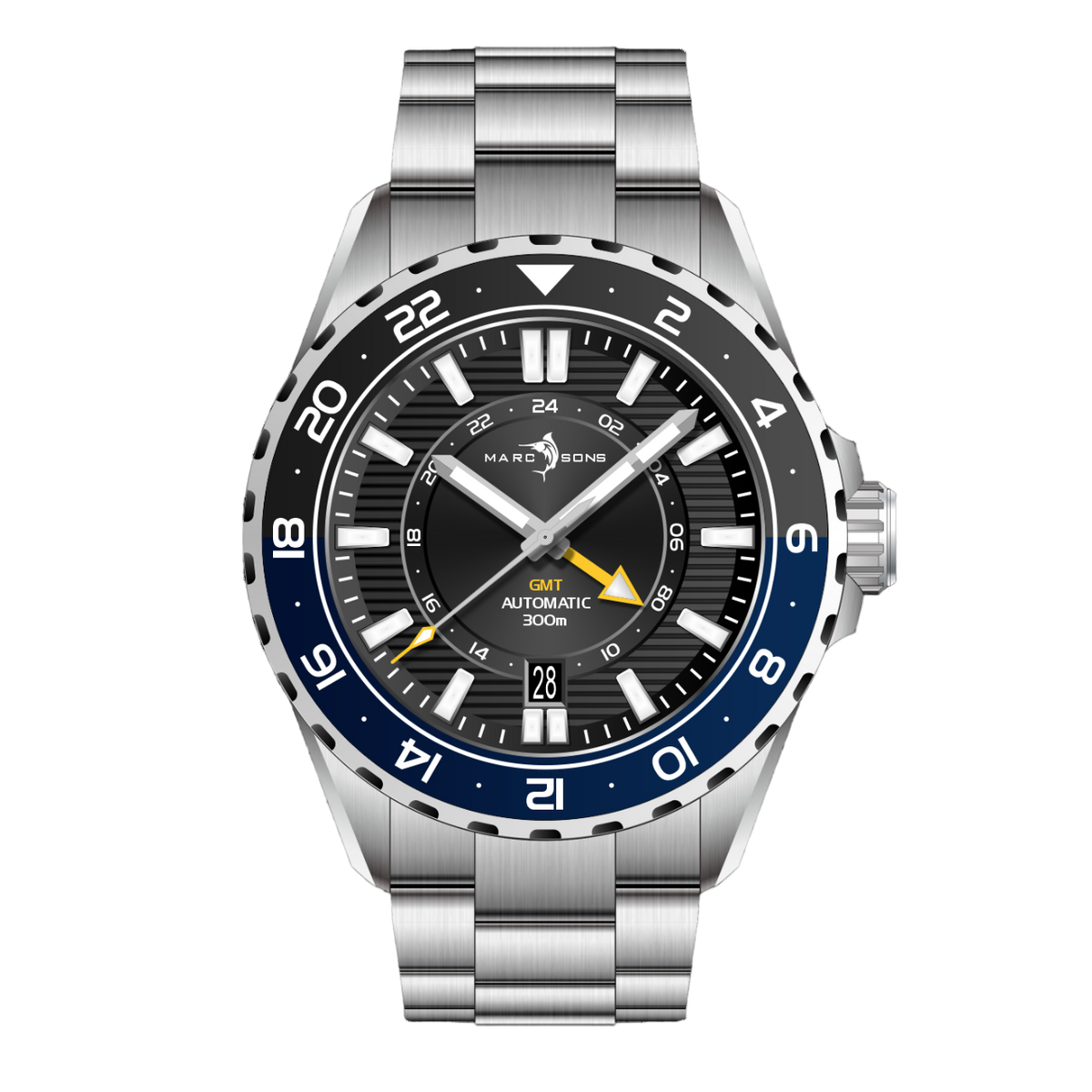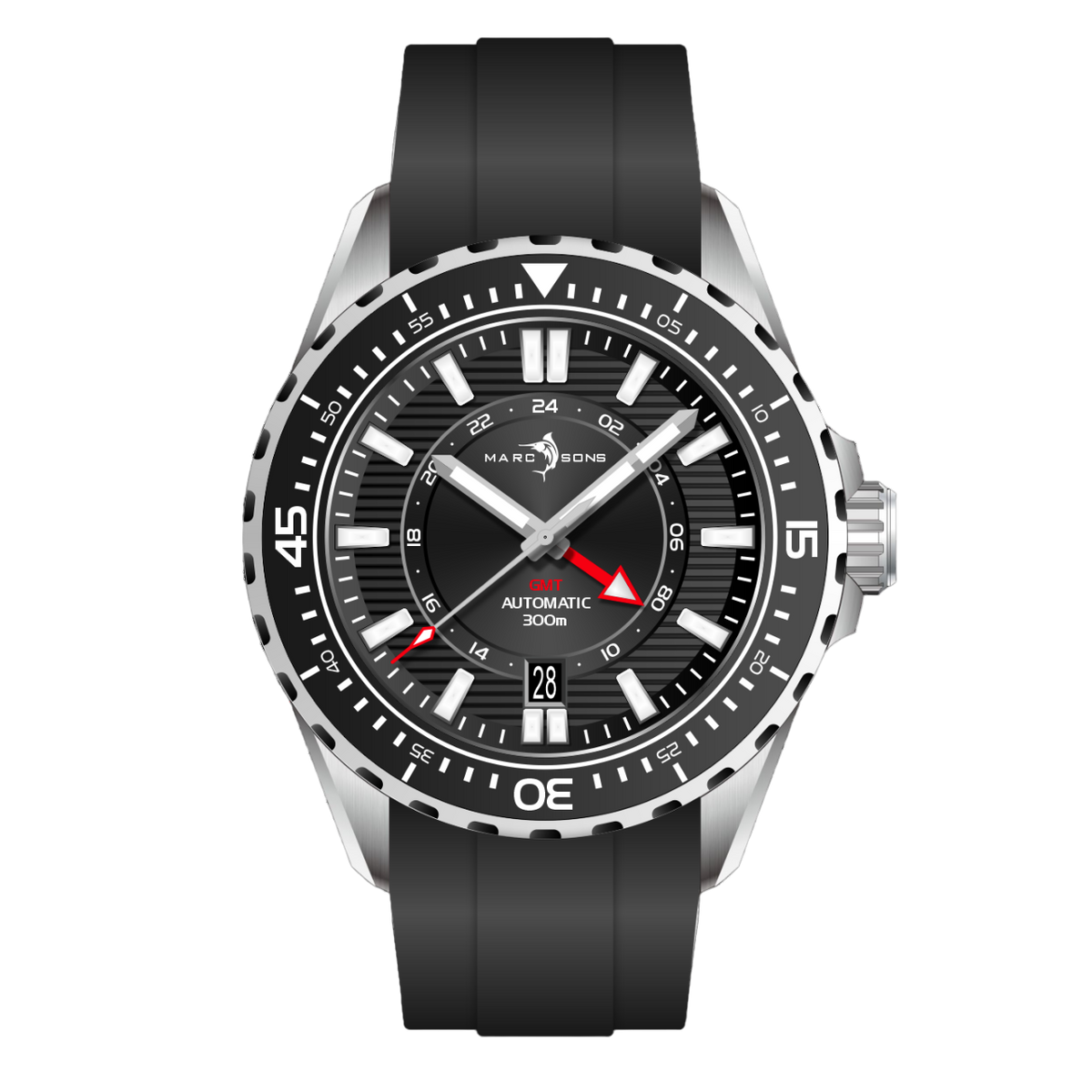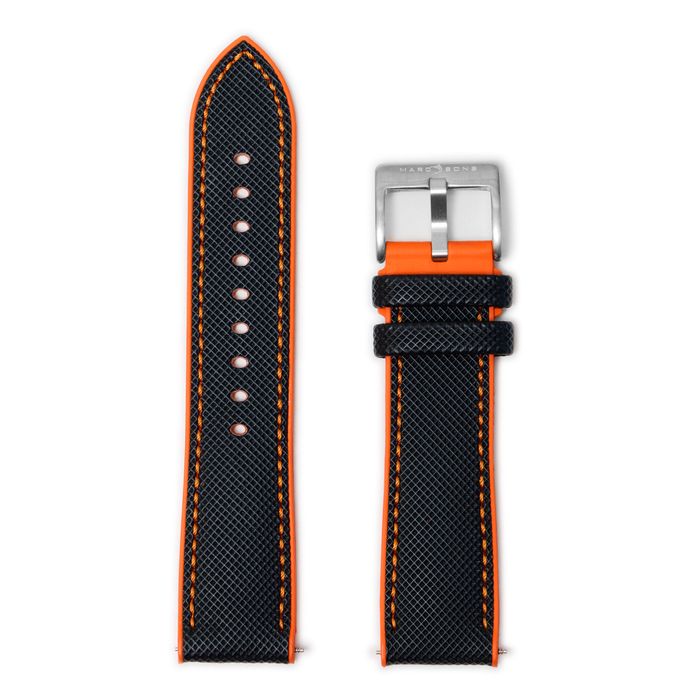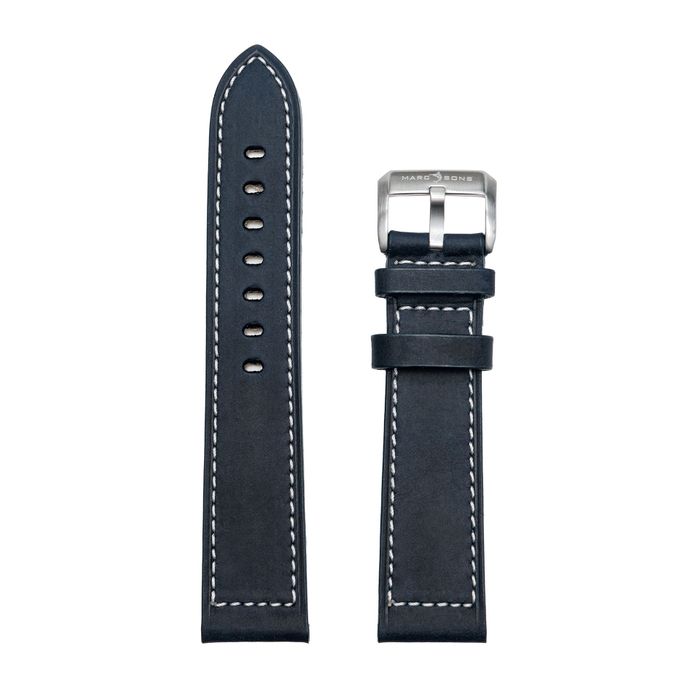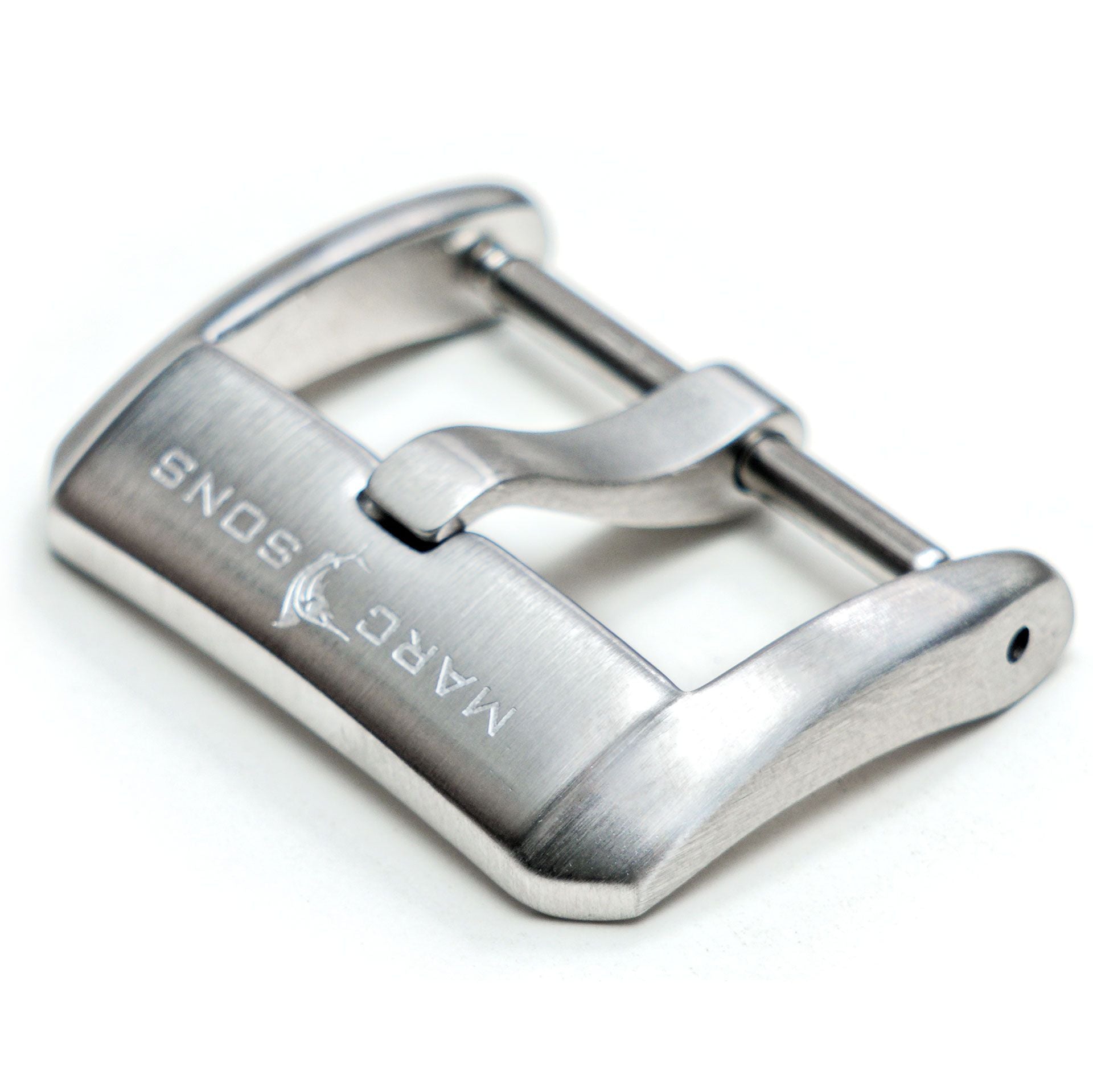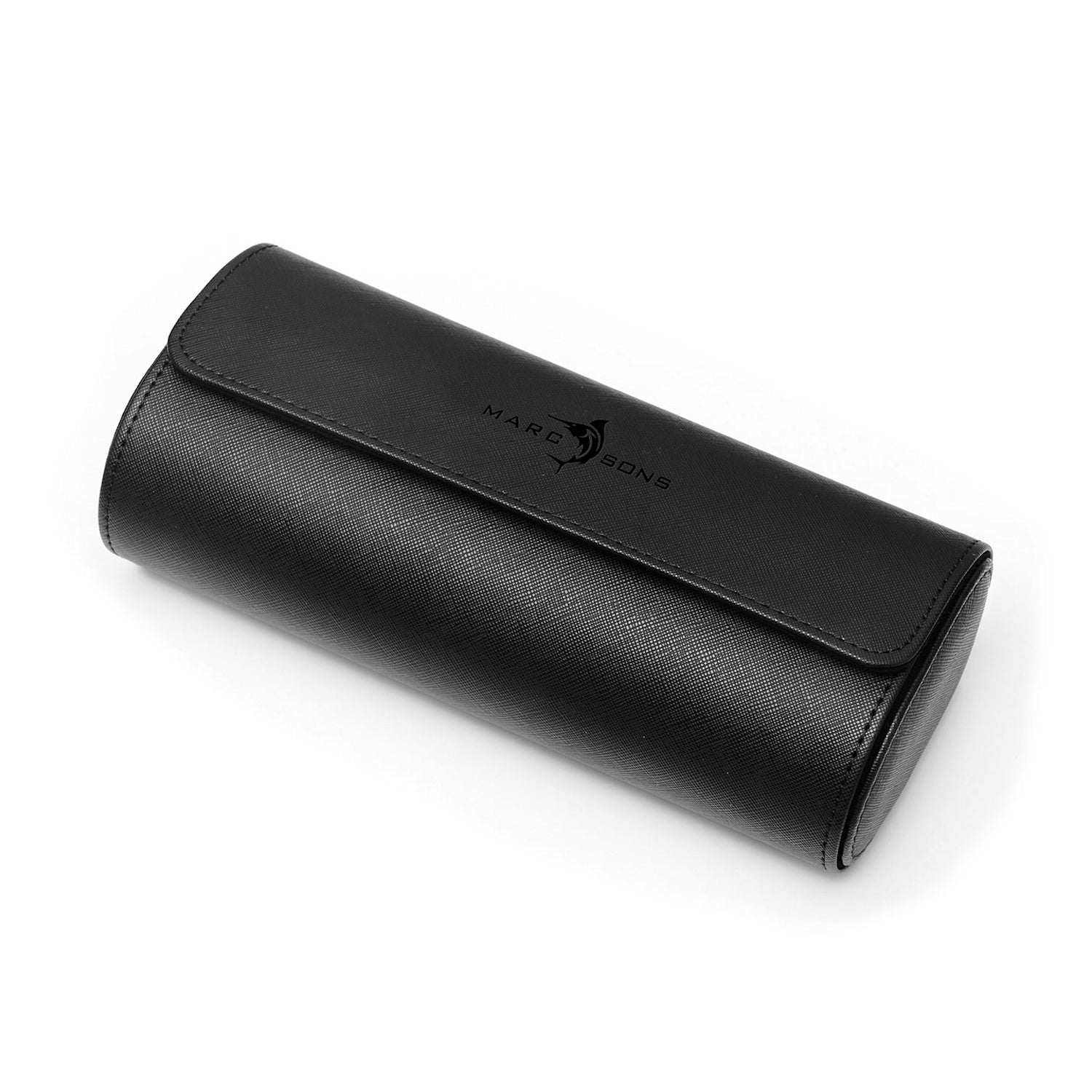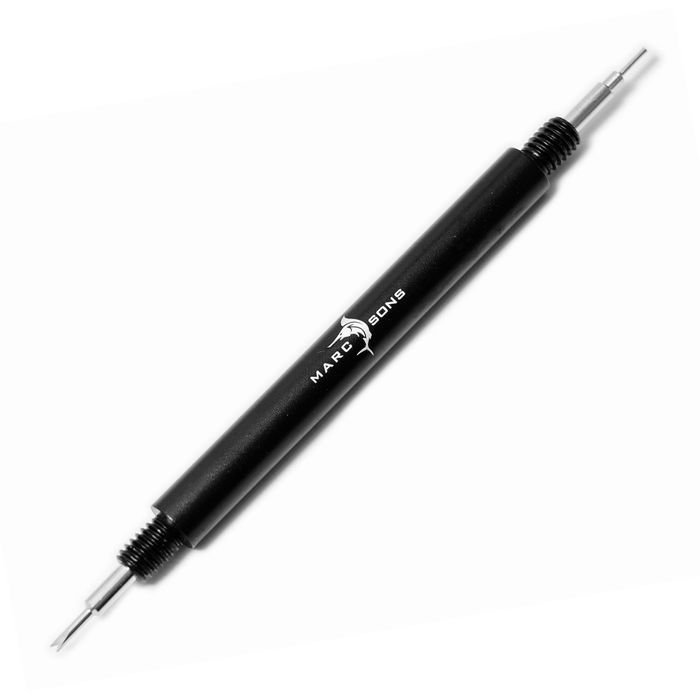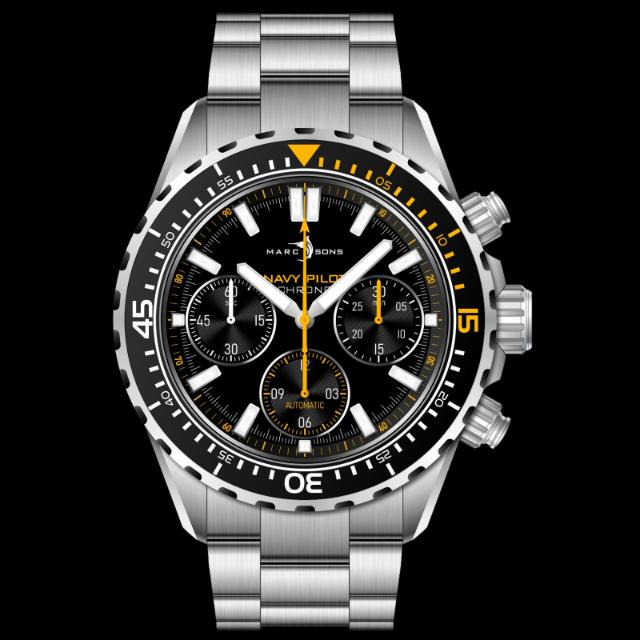What movements does Marc & Sons use?
The availability of mechanical clock movements and their prices are subject to strong fluctuations. Waiting times of up to eighteen months and price increases of up to one hundred percent within a year are not uncommon. Therefore, MARC & SONS uses mechanical clock movements from different manufacturers in order to be able to react more flexibly to market changes and always offer its customers the best price-performance ratio. When selecting movements, MARC & SONS attaches great importance to quality and reliability. For these reasons, only high-quality mechanical clock movements from world-famous manufacturers MIYOTA, SEIKO, Sellita and ETA are used.
Our Sellita movements
The history of Sellita
The history of Sellita began in 1950, when Pierre Grandjean opened a small remounting workshop in La Chaux-de-Fonds. The company quickly developed into a sought-after remounter for mechanical movements. Pierre Grandjean worked mainly for ETA. Only since the year 2003 Sellita appears as an independent movement manufacturer. The reason for this is that ETA announced in 2002 to stop the production of raw movements and to market only fully assembled movements from 2006 on. Since the patents for all important movements of ETA had already expired at that time, Sellita seized the opportunity and offered all interested customers an adequate replacement by producing its own movements.
Sellita - Caliber SW200-1
The caliber SW200-1 from Sellita is a sophisticated mechanical Swiss movement identical in construction to the ETA 2824-2. Equipped with a ball-bearing rotor, a stop-seconds function and a date with date quickset, this movement works very accurately with 28,800 vibrations per hour. Furthermore, the movement has a shock protection and a manual winding. The power reserve is approximately 38 hours.
Technical data:
Functions: Hour, minute, central second, date
Lines 11½
Height 4.60 mm
Case diameter: 25.6 mm
Bearing jewels: 26 jewels
Frequency: 28,800 A/h
Power reserve: 38 hours
Sellita – caliber SW330-2
The caliber SW330-2 is a mechanical movement with automatic winding, a stop seconds and a second time zone with a 24-hour hand. The movement is equipped with an Incabloc shock protection and a stone anchor escapement. The movement is particularly popular with pilots because of its GMT function.
Technical data:
Functions: hour, minute, central seconds, date, second time zone
Lines 11½
Height 4.10mm
Total diameter: 26.20mm
Frequency: 28,800 A/h
Bearing stones: 25 stones
Power reserve: 56 hours
The caliber SW510 from Sellita is a sophisticated mechanical chronograph movement known for its legendary robustness. Equipped with a ball-bearing rotor, a second stop and a date with quick-set date, this movement works very precisely with 28,800 vibrations per hour. The power reserve is approximately 62 hours.
Sellita – Caliber SW510 BHa
Technical data:
Chronograph with switching cams - two pushers
Hours minutes
small seconds at 9 o'clock
60 second counter in the center
30 minute counter at 3 o'clock
Date with quick correction
Automatic winding with ball bearings
Second stop device
28,800 vibrations per hour (4 Hz)
27 stones
Typical power reserve: 62 hours
Sellita – caliber SW510 b
Technical data:
Chronograph with switching cams - two pushers
Hours minutes
small seconds at 9 o'clock
60 second counter in the center
30 minute counter at 3 o'clock
12 hour counter at 6 o'clock
Date with quick correction
Automatic winding with ball bearings
Second stop device
28,800 vibrations per hour (4 Hz)
27 stones
Typical power reserve: 62 hours
Our MIYOTA movements
The history of the movement manufacturer MIYOTA
The company MIYOTA was founded in 1959 by the Japanese watch manufacturer Citizen. The task of the factory, which is located in the Japanese Alps, is the production of watch movements. Today MIYOTA is a 65 percent subsidiary of Citizen Watch Co, the world's largest watch and movement manufacturer. MIYOTA's movements, which are produced in the city of the same name, Miyota, Nagano Prefecture and Kitakami, enjoy an excellent reputation among experts and are considered extremely reliable.
MIYOTA - Caliber 8215
The caliber 8215, which has been produced since 1977, is one of Miyota's most popular mechanical movements. Besides a center second hand, this movement also contains a quickset mechanism for the date, a parashoc shock protection and a Swiss lever escapement. The rate deviation is indicated as -20 to +40 seconds per day. Experience shows, however, that the movement runs much more precise, sometimes with a deviation in the single digit second range. The power reserve is 42 hours.
Technical data:
Functions: Hour, minute, central seconds, date
Lines 11½
Height 5.67 mm
Overall diameter: 26.0 mm
Case diameter: 25.6 mm
Bearing jewels: 21 jewels
Frequency: 21,600 A/h
Power reserve: 42 hours
Rate deviation: -20 to +40 seconds per day
MIYOTA - Caliber 8217
MIYOTA's caliber 8217 has the same technical data as the caliber 8215, but in addition the movement is equipped with a 24-hour display, which is located at the 9:00 o'clock position. Just like the caliber 8215, the caliber 8217 impresses with its reliable operation.
Technical data:
Functions: Hour, minute, central second, date, 24h display
Lines 11½
Height 5.67 mm
Overall diameter: 26.0 mm
Case diameter: 25.6 mm
Bearing jewels: 21 jewels
Frequency: 21,600 A/h
Power reserve: 42 hours
Rate deviation: -20 to +40 seconds per day
MIYOTA - Caliber 9015
The caliber 9015, which was first presented in 2009, is a revolutionary further development of the caliber 8215. equipped with a ball-bearing rotor, a stop-seconds mechanism and a date with date quickset mechanism, this new movement works very accurately at 28,800 vibrations per hour. The rate deviation is indicated as -10 to +30 seconds per day. Experience shows, however, that the movement runs much more precise, sometimes with a deviation in the single digit second range. Furthermore, the movement has a shock protection, a Swiss lever escapement and a manual winding. The power reserve is 42 hours. The movement is a technical masterpiece due to its low overall height of only 3.9 mm.
Technical data:
Functions: Hour, minute, central seconds, date
Lines 11½
Height 3.90 mm
Overall diameter: 26.0 mm
Case diameter: 25.6 mm
Bearing jewels: 24 jewels
Frequency: 28,800 A/h
Power reserve: 42 hours
Rate deviation: -10 to +30 seconds per day
MIYOTA - Caliber 9100
Caliber 9100 is a high-quality mechanical multi-function movement from the MIYOTA 9000 series and has been in production since 2009. In addition to the calibre 9015, the movement features a power reserve indicator, a 24-hour display and a day of the week indicator. The movement operates at 28,800 vibrations per hour and offers a power reserve of 42 hours. A shock protection and the Miyota-typical date quickset mechanism are also part of the basic equipment of this movement, as well as the manual winding and the second stop.
Technical data:
Functions: Hour, minute, second, date, day of week indicator, 24-hour indicator, power reserve indicator
Lines 13½
Height 5.52 mm
Overall diameter: 30.2 mm
Case diameter: 25.6 mm
Bearing jewels: 26 jewels
Frequency: 28,800 A/h
Power reserve: 42 hours
Rate deviation: -10 to +30 seconds per day
Our SEIKO movements
The history of the movement manufacturer TMI Time Module
The company TMI was founded in 1987 by financial means of the companies Seiko Corporation, Seiko Instruments Inc. and Seiko Epson Corporation with the aim to produce watch movements. Time Module (H.K.) Ltd. is the world's leading manufacturer of watch movements. The movements are manufactured to our own specifications according to very strict quality standards. All production lines are certified according to ISO 9001 and ISO 14001 and recognized by the international certification body.
Seiko - Caliber NH35
The caliber NH35 is a robust and very reliable mechanical movement based on the legendary Seiko 7S26 caliber. It has a manual winding mechanism and a stop-second function. The rate deviation is indicated as -20 to +40 seconds per day. Experience shows, however, that the movement runs much more precise, sometimes with a deviation in the single digit second range. Furthermore, the movement has got a date quickset mechanism. The power reserve is 41 hours.
Technical data:
Functions: Hour, minute, central seconds, date
Height 5.32 mm
Overall diameter: 27.40 mm
Case diameter: 29.36 mm
Frequency: 21,600 A/h
Bearing jewels: 24 jewels
Rate deviation: -20 to +40 seconds per day
Power reserve: 41 hours
Our ETA movements
The history of ETA SA Manufacture Horlogère Suisse
ETA SA Manufacture Horlogère Suisse, whose roots go back to 1793, is a Swiss manufacturer of watches and movements and is part of the Swatch Group. Over 8000 employees work at eleven production sites. The head office of the company is located in Grenchen in Switzerland
ETA - Caliber 2824-2
The history of ETA Caliber 2824 dates back to 1971, when the first version of this legendary movement was presented. Since 1982 the version ETA 2824-2 has been produced and installed millions of times. The caliber has a ball-bearing central rotor that winds in both directions and an automatic winding mechanism. Furthermore, the movement is equipped with a stop-second, an Incabloc shock protection system, a Swiss lever escapement, a date quickset mechanism and the ETACHRON back system. The movement is considered robust and is known for its precise and reliable operation.
Technical data:
functions: Hour, minute, central second, date
lines 11½
Height 4.60 mm
Total diameter: 25.60 mm
Frequency: 28,800 A/h
Jewels: 25 jewels Power
reserve: 38-40 hours
ETA - Caliber 2893-2
Caliber 2893-2 is a mechanical movement with automatic winding, a stop-seconds and a second time zone with a 24-hour hand. The movement is equipped with an Incabloc shock protection system, a stone anchor escapement and the ETACHRON back system. The movement is especially popular with pilots because of its GMT function.
Technical data:
functions: Hour, minute, central second, date, second time zone
lines 11½
Height 4.10 mm Total
diameter: 25.60 mm
Frequency: 28,800 A/h
Jewels: 21 jewels Power
reserve: 42 hours
ETA - Caliber 7750
The ETA caliber ETA 7750, also known as Valjoux 7750, is probably the most successful automatic chronograph movement of all times. It has been produced since 1973 and is constantly being further developed. The movement is equipped with a unidirectional winding rotor with ball bearings. The movement operates at 28,800 vibrations per hour and has a power reserve of approximately 44 hours. The movement features a Glucydur balance, a Nivaflex mainspring and an Incabloc shock protection system. Furthermore, the movement is equipped with the ETACHRON regulator system and regulator corrector as well as a stop-second function. It is operated by two pushers, the chronograph mechanism works with cams.
Technical data:
functions: Hour, minute, small second, date, day of the week indicator,
chronograph with 30-minute counter, 12-hour counter and central stop-second hand
Lines 13 ¼
Height 7.90 mm
Diameter 30.0 mm
Jewels: 25 jewels
Frequency: 28,800 A/h Power
reserve: approx. 44 hours
Japanese or Swiss movement - which is better?
To answer this question, we have to compare the movements with each other. The ETA 2824-2, the MIYOTA calibres 8215, 8217 and 9015, as well as the Seiko calibre NH35 are all reliable mechanical movements with date. They have been produced for years and are used in numerous watches of world-famous brands. Swiss ETA movements are mainly used in the watches of the parent company Swatch Group. These include brands such as Longines, Omega, Certina, Rado or Tissot and Hamilton. Japanese movements can be found in watches from Seiko, Citizen, etc. There are various factors that influence the value of a movement, its reliability and its gait.
1. vibration frequency
In principle, it can be said that the rate of a mechanical movement improves with an increase in the number of oscillations. For decades, a value of 18000 half vibrations was considered standard and even today many newly produced movements still work with this vibration number. All movements we use run with higher vibration frequencies, either 21600 or 28800, and the vibration frequencies of a Japanese movement (e.g. MIYOTA caliber 9015) and a Swiss movement (e.g. ETA 2824-2) are identical. The gait of the works is the same.
2. stones
A stone, also called jewel or ruby, is a bearing made of a gemstone within the complex movement. The stones, which were developed as early as 1704 by a Swiss mathematician, are today mostly produced synthetically. It is divided into bearing stones and capstones. The task of the stones is to reduce friction and wear on moving parts. Simple mechanical movements work with five to seven jewels. Over time, however, seventeen stones have become established as the standard. All the movements we use, whether Japanese or Swiss made, have significantly more jewels. However, more than 25 stones are usually not necessary and therefore do not represent an additional quality feature. Rather, these additional stones are used for aesthetics and decoration in the luxury watch segment.
3rd power reserve
The power reserve, often referred to as the power reserve, is the time during which a mechanical movement runs correctly until it comes to a standstill with the spring wound to its maximum, without any external influences such as winding or movement. Even with this comparison criterion, the Japanese and Swiss works are in the same range with values over forty hours.
In summary, it can be said that the technical data of the Japanese and Swiss movements we use are almost identical. A date quick-action switch is as much a standard feature as a shock protection. There are small differences in the finish. The surface finish is nuances better at the Swiss plants. Swiss movements with gold-plated parts are offered in some cases. But this has no influence on the quality or the movement behavior of the movement and usually remains - at least on divers' watches - invisibly hidden under the steel watch back. When it comes to quality and reliability, Japanese movements are hardly inferior to Swiss movements and thus represent an inexpensive alternative for our customers.

